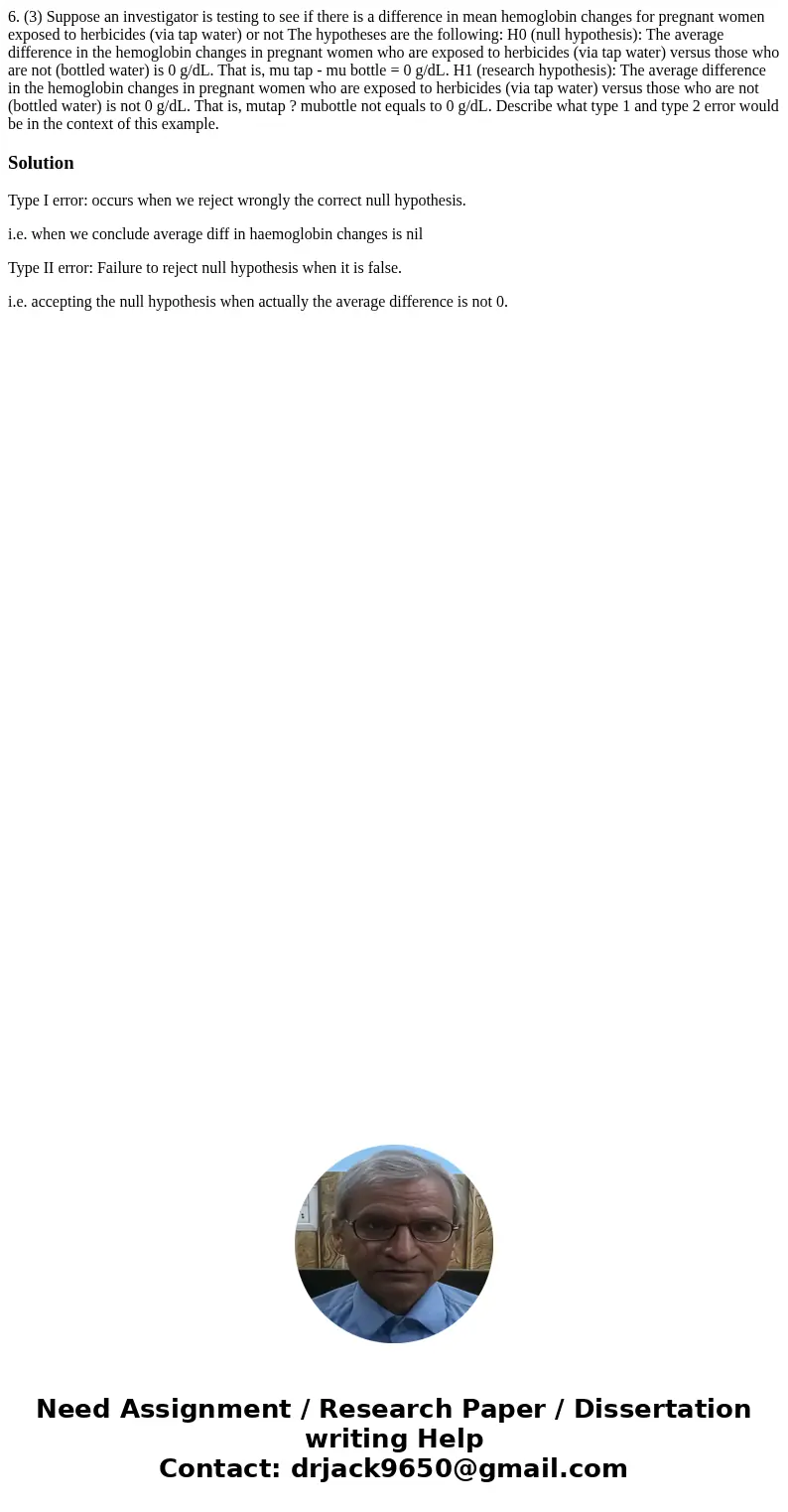6 3 Suppose an investigator is testing to see if there is a
6. (3) Suppose an investigator is testing to see if there is a difference in mean hemoglobin changes for pregnant women exposed to herbicides (via tap water) or not The hypotheses are the following: H0 (null hypothesis): The average difference in the hemoglobin changes in pregnant women who are exposed to herbicides (via tap water) versus those who are not (bottled water) is 0 g/dL. That is, mu tap - mu bottle = 0 g/dL. H1 (research hypothesis): The average difference in the hemoglobin changes in pregnant women who are exposed to herbicides (via tap water) versus those who are not (bottled water) is not 0 g/dL. That is, mutap ? mubottle not equals to 0 g/dL. Describe what type 1 and type 2 error would be in the context of this example. 
Solution
Type I error: occurs when we reject wrongly the correct null hypothesis.
i.e. when we conclude average diff in haemoglobin changes is nil
Type II error: Failure to reject null hypothesis when it is false.
i.e. accepting the null hypothesis when actually the average difference is not 0.

 Homework Sourse
Homework Sourse